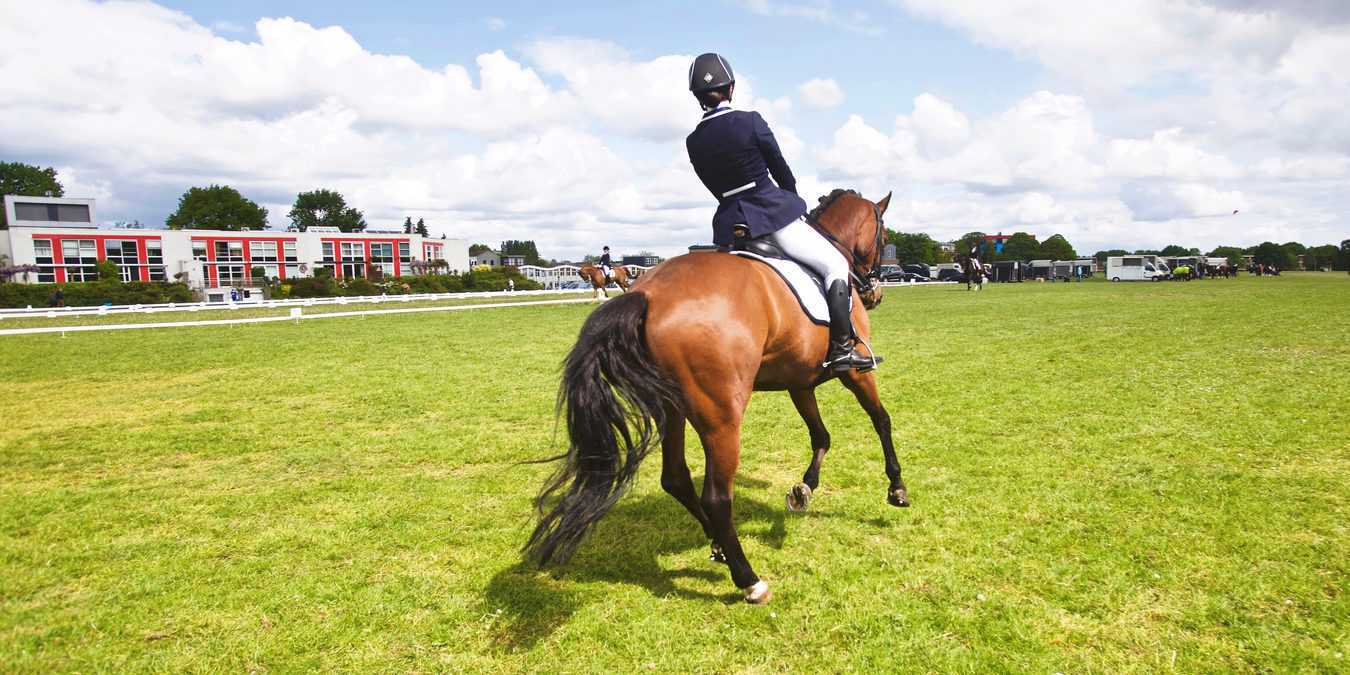Leading vet offers essential advice for riding on hard ground

While the majority of the UK enjoyed the driest June on record, horse owners have been fretting about riding on hard ground.
After the awful winter, we never thought we’d be wishing for rain, but we really need a downpour!
While we can’t control the weather, there are things we can do to reduce the impact of riding on hard ground. We spoke to Egbert Willems, director at Cliffe Equine Vets, who specialises in equine sports medicine.
What are the potential problems of riding on hard ground?
I have seen a lot of foot problems, particularly in the front feet, which are vulnerable to the hard ground. Problems occur in the coffin joint, deep digital flexor tendon and navicular.
The horse is often quite ‘pottery’ – which is means he isn’t quite lame, but is unwilling to stride out.
Hard ground can also cause inflammation of the joints, such as hocks, knees and coffin. As these are straight joints, which are perpendicular to the ground, the impact is greater.
In contrast, the fetlock is an angled joint, so the suspensory ligament and flexor tendons allow more flexibility, which causes less impact. It’s the same with tendons; as they are naturally quite flexible they can absorb more impact.
How do you treat these problems?
If we know is horse struggling with hard ground we put a plastic pad between the shoe and hoof and fill it with an impression material, which helps cushion the impact.
It’s the difference between wearing flat leather soles all day or trainers – you notice the difference.
If there is inflammation and heat we recommend cold therapy, rest and anti-inflammatories.
What can we do to prevent these injuries?
There are a number of preventative measures:
- Keep hooves moist and well-oiled. Preserving moisture in the hoof capsule will keep it more flexible, which allows for the impact of the hard ground. Also, if the hoof dries out it you will see more cracks in the feet, which can lead to another set of problems.
- After a work out, cold hose the legs for five minutes. If there is a water ban you can use an icepack or ice boot instead – leave it on for at least 15 minutes.
- Use interval training for fitness. Focus on short intervals, with lots of trotting and some canter work. Working your horse on a incline is ideal.
- Ride more in the school. If you need to get your horse canter-fit then doing this work on a softer surface will avoid injury.
- Go to the beach. I know this isn’t possible for everyone, but wet sand is great surface to work on.
Should we compete on hard ground?
There are no hard and fast rules for this, as there are so many variables. It depends on your horse – some are better on hard ground, while others will struggle.
It also depends on the event and the surface. Most events run by British Eventing will ensure the ground is well maintained, but you should check with the organisers.
For more great advice check out Vet Essentials, which features information from top vets on how to care for competition horses, including tendon injuries.






